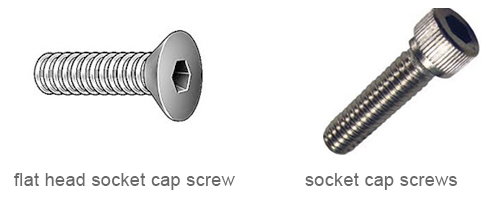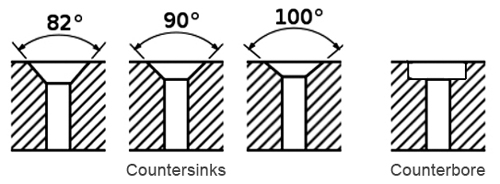PCBs generally need to include screw holes for fixing; as such, special holes, like countersinks and counterbores, are incorporated into the boards to allow them to be fixed in place using different types of screws.
What are the countersinks and counterbores
A countersink is a cone-shaped hole that is cut into the PCB to allow the flat head of a socket cap screw to fit flush with the surface of the board. A counterbore is a cylindrical flat-bottomed hole that is designed to house a hex head or socket head cap screw to be used to secure a PCB board.
The chamber angles that are commonly used for countersinks are 82°, 90° and 100°, while a counterbore has a 0° chamber angle but is vertical.










